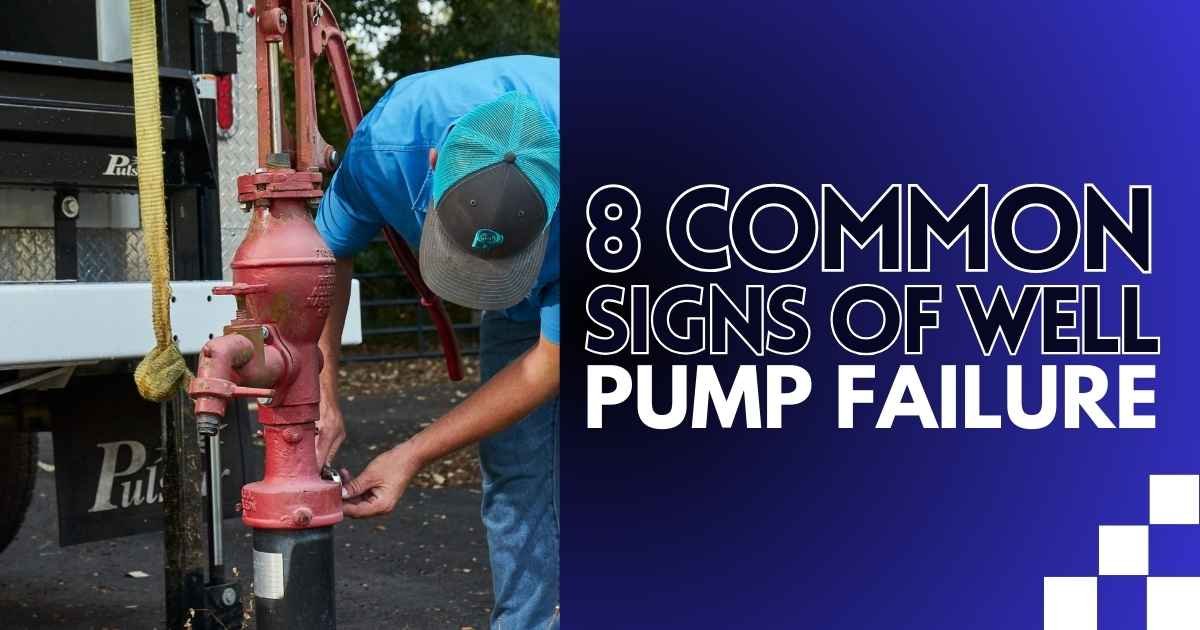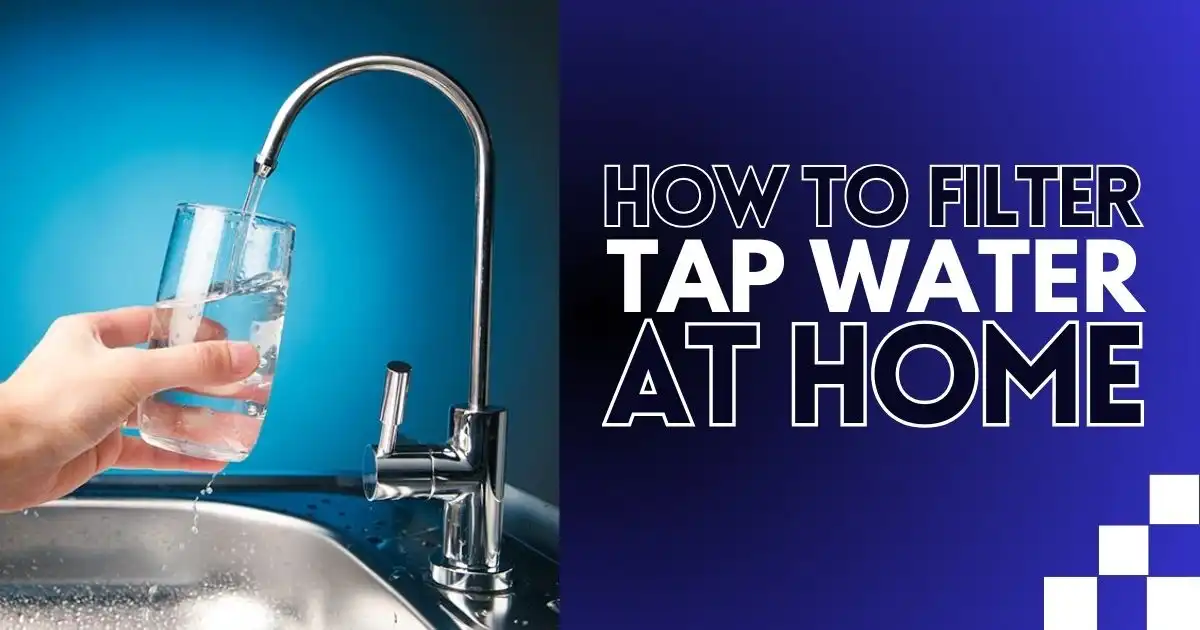You’re getting ready for a busy day—maybe making coffee, getting kids ready, or heading out to work—and suddenly, the water pressure drops. Or worse, there’s no water at all. You twist the faucet handle, hoping it’s just a quick glitch, but nothing changes. The frustration sets in as you wonder, “What now?”
If your home depends on a well pump, situations like this can disrupt your entire day. A failing well pump doesn’t just mean a moment of inconvenience—it can also point to bigger issues that could leave you without water for longer. Ignoring the signs could mean costly repairs or even a full replacement down the line.
What Is A Well Pump?
A well pump is a tool that moves water from a well into a storage tank. Depending on the type, it can be placed inside the house, in a nearby building, or directly in the well. Submersible pumps push water up through a pipe using impellers, while jet and centrifugal pumps use impellers to create suction to pull water up from the ground.
Each type works best in specific situations and comes with different setup and maintenance costs. Keep reading to learn more about these pumps.
8 Signs of Well Pump Failure
Spotting problems with your well pump early can save you time and money. Recognizing the signs you need a new well pump is essential. Here are 8 common indications that your well pump might be failing, so you can take action before it stops working completely.
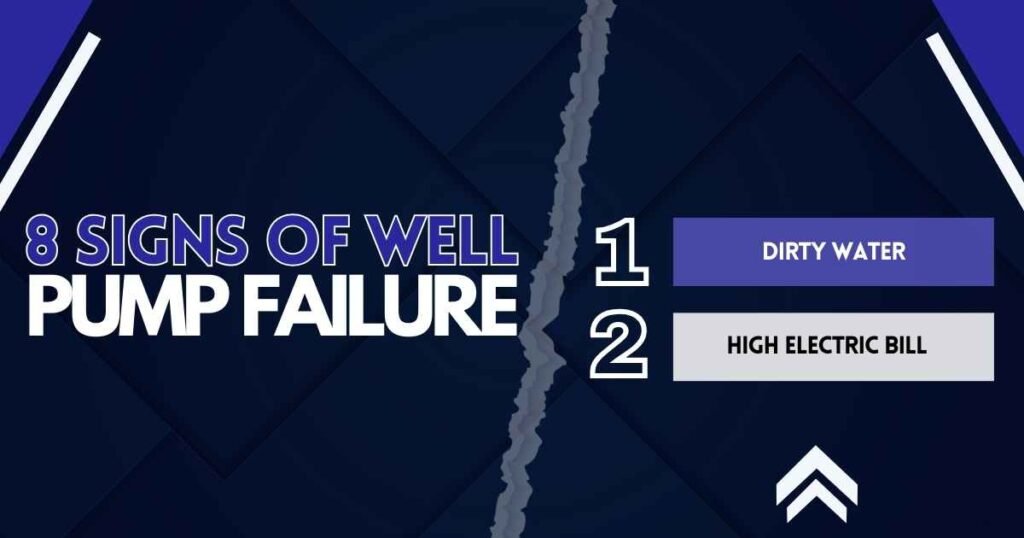
1. Dirty Water
If dirty or muddy water comes out of your taps, it’s a sign that something is wrong and could indicate signs of water pump failure. This might happen if the pump is too powerful, pulling debris like dirt and sand from the well.
A damaged pump filter can also allow contaminants to get into your water. Additionally, the pump might be placed too low in the well, causing it to draw from sediment-heavy areas. Don’t use or drink dirty water. Contact a professional to inspect the system and resolve the issue.
2. High Electric Bill
If your electric bill suddenly increases, your well pump might be the cause. For example, if the pump runs constantly because of a leak in the system or a pressure switch that isn’t working right, it uses more energy. Worn-out parts can also force the pump to work harder, making it less efficient. These problems not only raise your bill but also put extra strain on the pump, which can lead to bigger repairs later.
Let’s say you’ve noticed the pump runs even when no water is being used in your home. This could be due to a small pipe leak that’s making the pump work overtime. By fixing issues like these quickly, you can lower your energy costs and keep the pump working longer without unnecessary wear. A professional inspection can help pinpoint the exact problem and get it resolved.
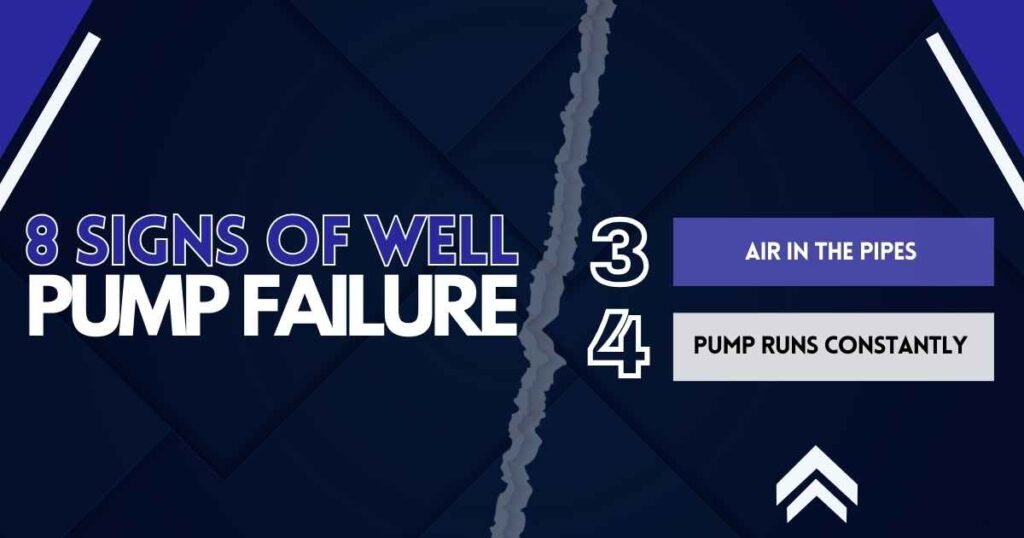
3. Air in the Pipes
Hearing sputtering or spitting noises when you turn on a faucet? This usually means air is trapped in your pipes. It could happen if the pump is installed too high above the water level or if there are leaks in the pipes.
These leaks let air in and water out, reducing efficiency. Over time, the pump may wear out from working harder to compensate. A professional inspection can identify and repair the source of the problem.
4. Pump Runs Constantly
If your well pump keeps running nonstop, it’s a sign that something isn’t working right. This might happen because of a leak in the suction line, which prevents the pump from creating the pressure needed to move water effectively. It could also be due to problems with the pressure tank, like a damaged air bladder, or clogs in the system that force the pump to work harder.
In some cases, the issue could be as simple as a faulty pressure switch, while in others, the pump itself may be wearing out due to age or heavy use. Ignoring this problem not only increases your electricity bill but can also cause the pump motor to overheat and fail completely.
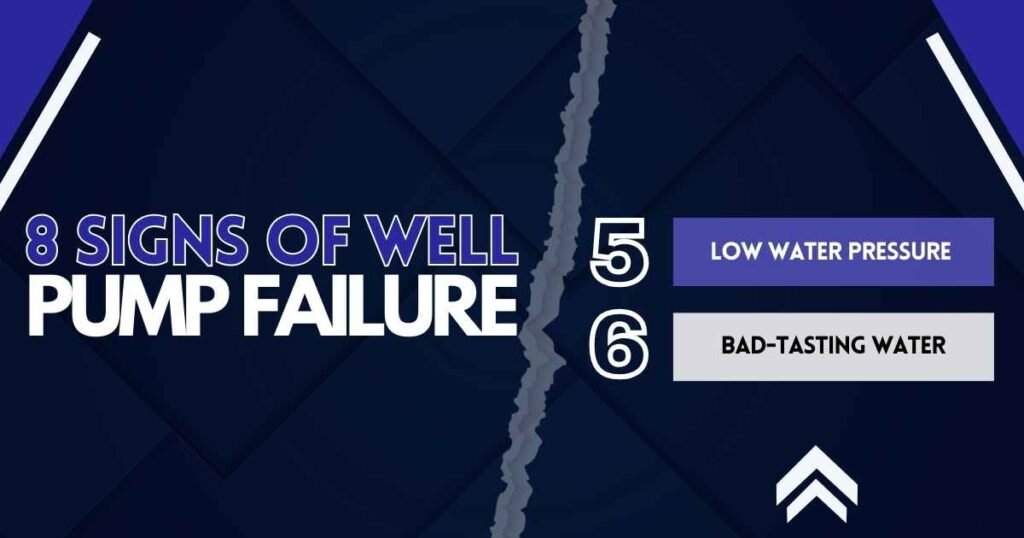
5. Low Water Pressure
If your shower or faucet dribbles instead of delivering a strong flow, the pump might be struggling. Low water pressure can happen if the pump is too small for your home, the water level in the well is low, the pressure tank isn’t working correctly, or you’re dealing with a broken well pump.
Studies show that about 15% of homes with private wells experience water pressure problems at some point, often due to aging systems or improper pump sizing. In older systems, wear and tear might also cause the pump to lose efficiency. A professional can determine the exact cause and recommend the right solution.
6. Bad-Tasting Water
If your water tastes strange or unpleasant, it could mean your pump is pulling in dirt, bacteria, or other contaminants from the well. This often happens if the pump’s filter is damaged or if it’s pulling water from a part of the well with poor quality.
According to the CDC, about 15 million U.S. households rely on private wells for drinking water, and many may not realize their water contains harmful contaminants. Stop using the water for drinking or cooking immediately and have it inspected. Testing your well water at least once a year helps ensure it’s safe for your household and prevents potential health risks.
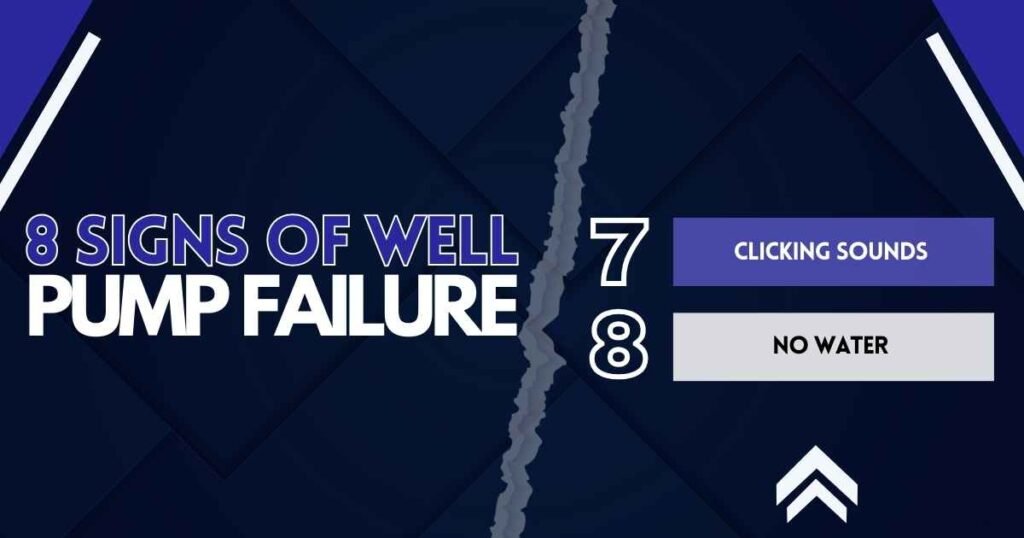
7. Clicking Sounds
A clicking sound coming from the pressure tank is often a sign of a damaged air bladder. When the air bladder leaks or bursts, the pump cycles on and off more frequently, creating these noises. This extra strain can wear out the pump motor faster.
Studies show that a pressure tank with a damaged air bladder can reduce the pump’s lifespan by up to 50% if the issue is not fixed promptly. A quick inspection by a professional can identify the problem and prevent costly repairs or the need for a full pump replacement.
8. No Water
If no water comes out when you turn on a faucet or flush the toilet, it’s a clear sign of trouble. The pump might not be pulling water from the well, or there could be a significant leak somewhere in the system. Electrical issues like a tripped breaker or a faulty motor could also stop the pump from working.
According to industry reports, about 60% of well pump failures are linked to electrical problems, such as power loss or motor failure. Check your electrical panel first to see if a breaker has tripped. If that’s not the issue, call a professional to inspect and fix the problem.
How to Fix Well Pump Problems?
If your water pump has an issue, don’t ignore it. The problem could get worse, leading to more damage, dirty water in your well, or costly repairs for the whole system later. If you’ve noticed any issues, here are some steps you can take to deal with them.
1. Repairing the Well Pump
Addressing pump problems quickly can often solve the issue with simple repairs. Problems like leaky pipe fittings, a damaged air bladder, or a broken pressure switch are usually cheaper to fix than replacing major parts. A well pump expert can find the problem and give you an estimate for the repair.
2. Replacing the Well Pump
Sometimes, a part is too damaged to fix and needs to be replaced. This might be a small cost, like $30 for a pressure switch, or a bigger expense, such as $975 to $2,800 for a full pump replacement. A professional can help you figure out what needs replacing and suggest the most cost-effective solution.
3. DIY Well Pump Repairs
If you’re comfortable working with well pumps, you might save money by fixing minor issues yourself. However, DIY repairs come with risks, such as electrical hazards or making the problem worse. Some tasks are simple, like checking the pump or running a quick test, and you can learn how to do them in just a few minutes.
Act Fast, Protect Your Water
When your well pump starts acting up, it’s easy to overlook the signs or put off repairs. But how you handle these problems now can affect your water supply and your home’s system in big ways. Taking quick action means protecting your water source, avoiding bigger repair costs, and keeping your home running smoothly. Staying on top of well pump issues, you safeguard your home’s comfort and your peace of mind for the long run.
Don’t wait for small well pump problems to turn into costly repairs. Vegas Plumbing Pros is here to help with fast, reliable well pump repair and replacement services. Our team of experts can quickly find the issue, provide affordable solutions, and make sure your water system works smoothly again. Contact Vegas Plumbing Pros today—your local experts for all your well pump needs!
FAQs
What to do when well pump fails?
To stay safe, call a qualified technician to check the system and make sure everything is working properly. Electrical problems can be dangerous if left unchecked and are often among the signs of well pump issues. If you think your well pump has no power, check the service panel and the circuit breaker for the well pump.
How to fix water pump failure?
Fixing a water pump usually means replacing the entire pump instead of repairing small parts. This is because most water pumps are sealed units, making it hard to access or fix individual components. Replacing the pump ensures a long-lasting solution and helps avoid repeated issues that could come from trying to repair internal parts.
What is the most common problem of a water pump?
Low water pressure is one of the most common signs of well pump issues. This can happen for many reasons, such as a pump that isn’t strong enough, clogs in the pipes, or problems with how the system is set up. Other causes might include a leak in the system, a worn-out pressure switch, or sediment buildup in the pump.
How do you know if you need a new well pump?
Low water pressure or air in your pipes are common signs of a bad well pump. This often happens when an old or damaged pump starts losing its ability to work efficiently. Over time, the pump may struggle to pull enough water from the well, leading to these issues. If left unchecked, the problem can get worse, affecting your water flow and putting extra strain on your entire system.
